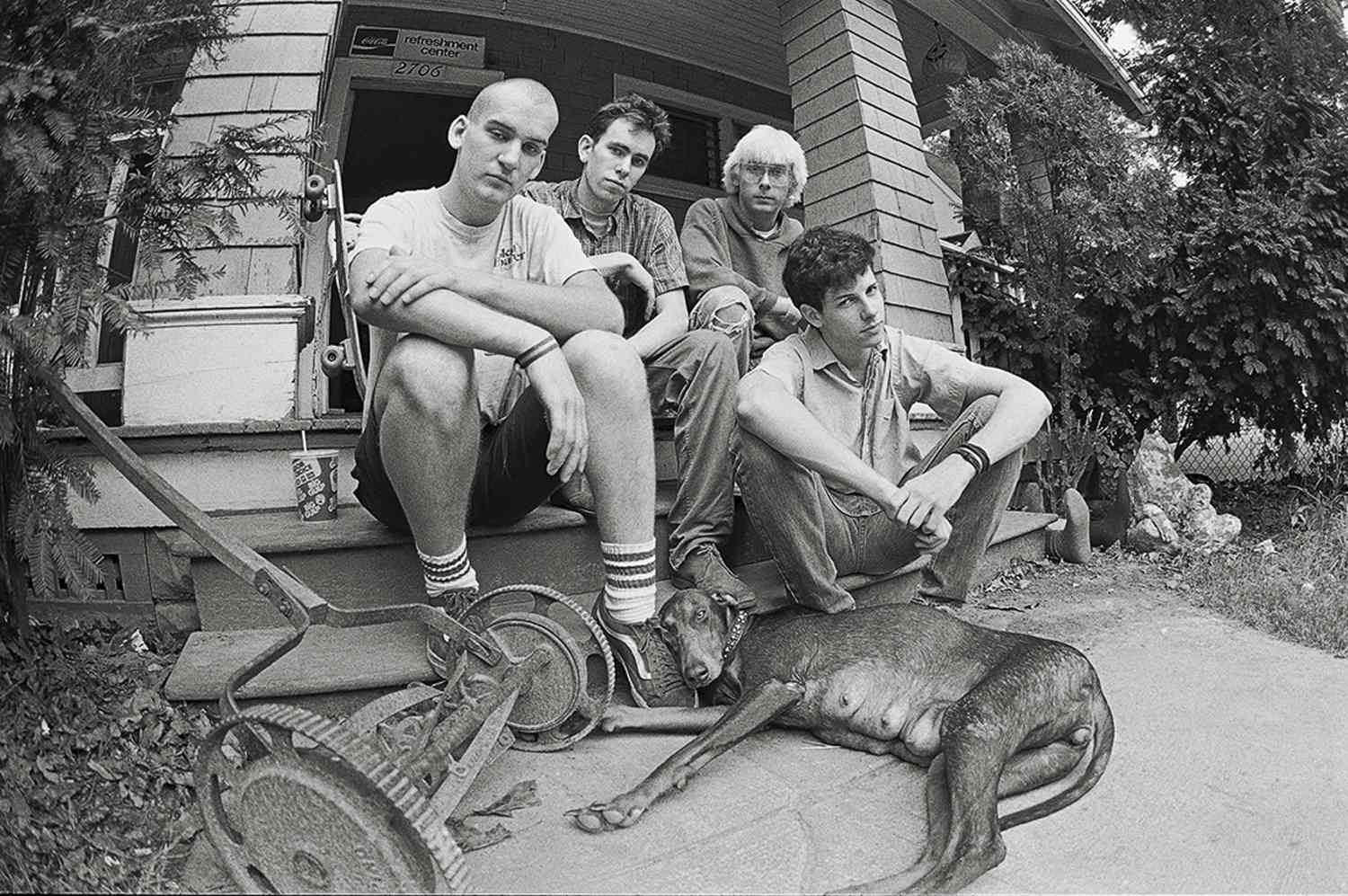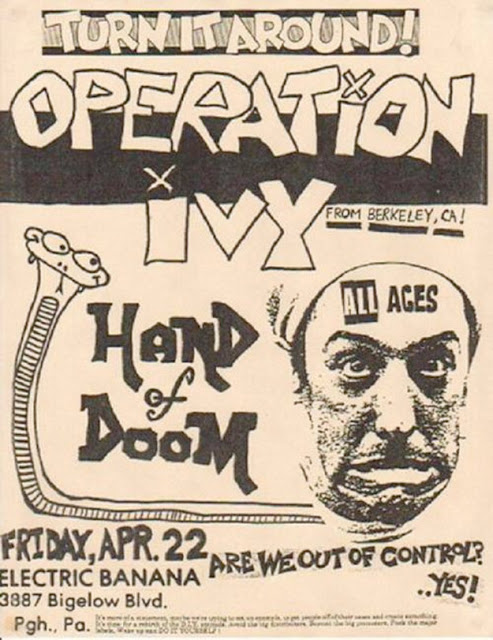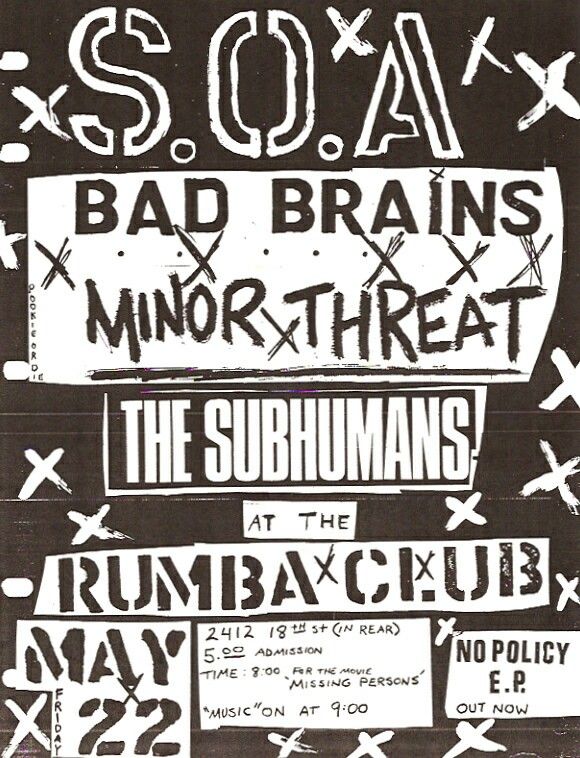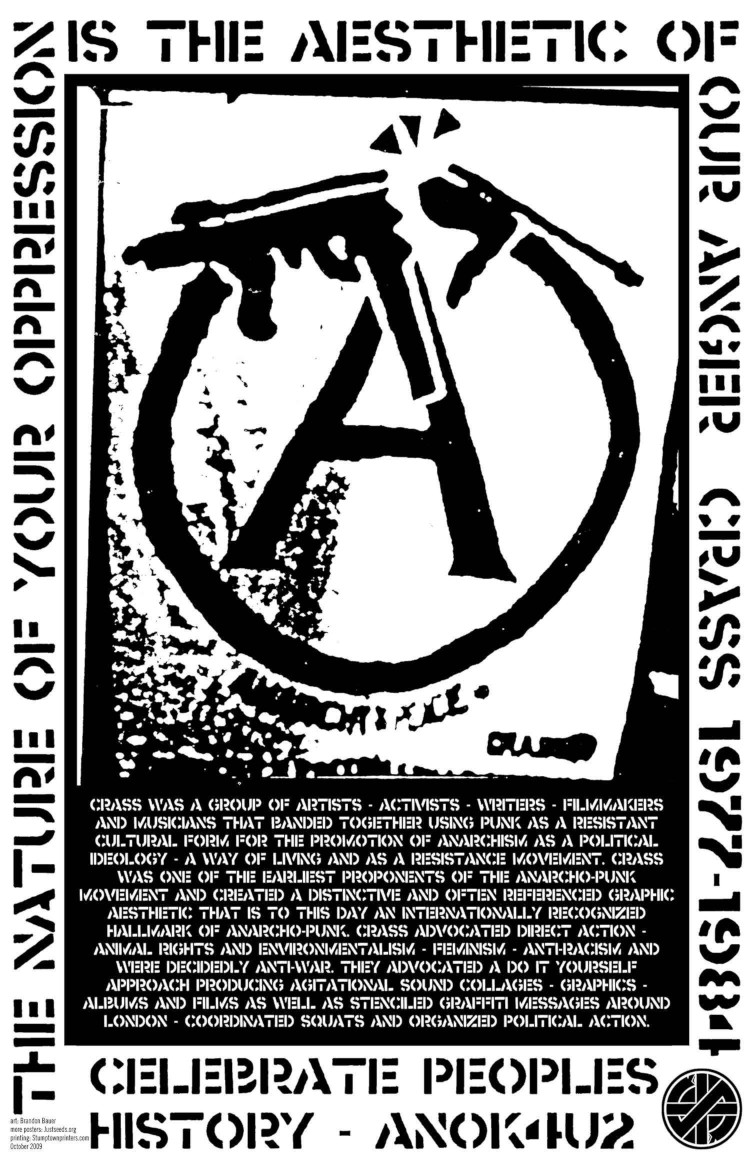All Ages Punk : From Rebellion to Resilience
Reading Time 13-17min
Contents Index
All Ages Punk : From Rebellion to Resilience
The Origins of the All Ages Punk
The Broader Evolution of Punk Rock: Commercialization and Mainstream Success
Anarcho-Punk Comes To The Rescue!
All Ages Punk : From Rebellion to Resilience
The all ages punk scene has been a vital part of punk rock culture, standing firmly against the mainstream music industry's often restrictive and exclusive practices. Emerging in the late 1970's and evolving through the 1980's, this movement sought to create spaces where people of all ages, especially younger fans, could enjoy punk music and its rebellious spirit without facing barriers like age restrictions, high ticket prices, or commercialization. Although the scene thrived initially, it has faced significant challenges from capitalism and commercialism, which have diluted its original ethos. This essay explores the origins of the all ages punk movement, its development during the 1980's, the impact of commercialization, and how punk communities continue to fight these pressures today.
The Origins of All Ages Punk
The 1980s were a transformative time for punk rock, as it evolved from its early days into a more diverse and politically charged movement. The first wave of punk, with bands like The Ramones, Sex Pistols, and The Clash, ignited a cultural revolution that rejected the polished production and consumerism of mainstream rock. Punk eventually evolved into hardcore, becoming faster, louder, and more aggressive, with American bands like Minor Threat, Bad Brains, Black Flag, and Dead Kennedys leading the charge. While hardcore punk bands and scenes emerged all over the USA, it gained major prominence in Washington D.C., Los Angeles, and New York. In contrast, Europe already had an established infrastructure for alternative cultures, with squats and community centers pivotal in creating inclusive, DIY spaces for young punks. These venues, alongside pubs that turned a blind eye to age restrictions, provided a unique foundation for all ages punk scenes to thrive without the same legal barriers faced in the US.

A crucial part of this evolution was the belief that punk should be accessible to everyone, regardless of age. The traditional music industry, focused on making a profit, often relied on bars and clubs as primary venues. These venues usually had age restrictions because of alcohol sales, excluding younger fans from experiencing live punk music. This exclusion was at odds with punk’s core values of rebellion, inclusivity, and community. In response, many bands and fans sought alternatives, creating a network of all ages venues that prioritized access over profit.
The DIY (Do-It-Yourself) ethos became central to punk culture. Early punk bands often self-produced their records and organized their own shows in small venues or community spaces. This grassroots approach fostered an environment where anyone could participate in music-making, regardless of age or background.
Minor Threat, a pioneering hardcore punk band from Washington D.C., was key in establishing the all ages punk scene. Formed in 1980, Minor Threat was known for its fast, aggressive songs that carried messages of personal responsibility, integrity, and resistance to mainstream norms. Frontman Ian MacKaye became a vocal advocate for all ages shows, challenging the exclusionary practices of traditional venues. Minor Threat’s commitment to accessible spaces was a direct challenge to the age restrictions imposed by the commercial music industry.
 Similarly, Bad Brains played a significant role in shaping the all ages punk
scene with their explosive energy and unique blend of hardcore punk
and reggae. As one of the first prominent African American punk
bands, Bad Brains reached new audiences. They frequently performed in
community centers and DIY spaces, where age restrictions were less of
an issue, embodying the all ages punk ethos with their raw and
inclusive performances. The rise of All Ages shows became significant
during this period. These events provided safe spaces for young
people to experience live music without the barriers often imposed by
age restrictions at bars or clubs. Promoters began organizing
concerts specifically designed for all ages audiences, fostering a
sense of community among diverse groups.
Similarly, Bad Brains played a significant role in shaping the all ages punk
scene with their explosive energy and unique blend of hardcore punk
and reggae. As one of the first prominent African American punk
bands, Bad Brains reached new audiences. They frequently performed in
community centers and DIY spaces, where age restrictions were less of
an issue, embodying the all ages punk ethos with their raw and
inclusive performances. The rise of All Ages shows became significant
during this period. These events provided safe spaces for young
people to experience live music without the barriers often imposed by
age restrictions at bars or clubs. Promoters began organizing
concerts specifically designed for all ages audiences, fostering a
sense of community among diverse groups.
On the West Coast, influential all ages punk bands emerged as well. In Berkeley, California, Operation Ivy, formed in 1987, became a key player in the ska-punk genre. Their music, combining ska’s upbeat rhythms with punk’s intensity, resonated with fans of all ages. Operation Ivy’s DIY ethics extended beyond their music to their live performances, focusing on community and solidarity rather than commercial success. In Southern California, the Descendents, formed in 1977, became known for their melodic punk rock, addressing themes of adolescence and personal growth. Their commitment to performing in all ages venues reinforced the idea that punk should be accessible to everyone.
The Broader Evolution of Punk Rock: Commercialization and Mainstream Success
The all ages punk scene thrived in the 1980s and would later attract the attention of commercial interests. As alternative rock, grunge, ska and pop punk became more popular on the radio, television and movies, major record labels and corporations turned to the all ages scene for ‘the next big thing’. What was once a symbol of rebellion, became commodified and repackaged for mass consumption. This commercialization had a profound impact on the all ages punk scene, diluting its original spirit and creating tensions within the community.
As commercialization grew, the punk scene also began to fragment. Bands with a more politically charged message, particularly in the emergent crust, hardcore, and anarcho-punk subgenres, remained committed to playing smaller, DIY venues that aligned with their ethos. These spaces upheld the original ideals of punk—autonomy, resistance, and community building—while offering an all-ages environment free from corporate influence. On the other hand, the rise of pop punk and adjacent genres, which were more palatable for mainstream audiences, saw bands transitioning to larger, corporate venues, where they could reach a broader fan base. This shift gave them increased exposure but distanced them from the grassroots nature of the scene, further deepening the divide.
Commercialization introduced several challenges, including a shift from DIY venues to larger, profit-driven spaces, which became the norm for many of the more commercially successful bands. These commercial venues, driven by profit, were more likely to impose age restrictions due to alcohol sales, excluding younger fans from live music experiences. For bands that remained in the DIY scene, this fragmentation underscored the importance of all-ages spaces that preserved inclusivity and accessibility. Meanwhile, increased ticket prices at the larger venues made punk shows less affordable, further alienating those without disposable income and deepening the rift within the community.
 Of course, there was no shortage of bands, such as NOFX and Propagandhi, that developed a more accessible sound, while remaining true to the punk ethos. At the same time, bands that were disillusioned by the commercial direction of punk pushed the genre into new musical territories, such as hardcore, metal, ska, and folk. This diversification allowed the underground scene to further evolve . This created a divide within punk and hardcore scenes, between those who embraced commercial success and those who remained committed to underground, DIY principles.
Of course, there was no shortage of bands, such as NOFX and Propagandhi, that developed a more accessible sound, while remaining true to the punk ethos. At the same time, bands that were disillusioned by the commercial direction of punk pushed the genre into new musical territories, such as hardcore, metal, ska, and folk. This diversification allowed the underground scene to further evolve . This created a divide within punk and hardcore scenes, between those who embraced commercial success and those who remained committed to underground, DIY principles.
The commercialization of punk also affected its cultural landscape. Punk’s symbols of rebellion, like Mohawks and leather jackets, were appropriated by mainstream fashion, turning them from expressions of dissent into marketable trends. This commodification stripped punk of its subversive power, transforming it into just another consumer product. The all ages punk scene, once a bastion of resistance against mainstream culture, now faced the challenge of maintaining its integrity amidst commercialization, while adapting to the genre’s growing diversity and new subcultural branches.
The Global Spread
While the all ages punk scene in the U.S. and UK gained significant attention, its influence spread globally. In countries experiencing political repression, economic hardship, and social inequality, punk became a powerful outlet for dissent and community-building among marginalized youth. The DIY ethic and anti-commercial stance of all ages punk resonated strongly in regions with limited access to mainstream music resources.
In Brazil, the punk scene began emerging in the early 1980's with bands like Ratos de Porão and Cólera leading the charge. During a time of military dictatorship, Brazilian punk became a vehicle for resistance against authoritarian rule. Ratos de Porão, known for their aggressive sound and politically charged lyrics, played in DIY venues where fans of all ages could participate, addressing issues like poverty, police brutality, and corruption.

In Indonesia, punk rock emerged as a form of resistance against the authoritarian Suharto regime. Bands like Marjinal and Superman is Dead embraced the DIY ethos, organizing their own shows and building communities around their music. Marjinal’s anti-authoritarian and anti-capitalist messages, along with their performances in informal spaces, established punk as a tool for social change in Indonesia.
In Russia, punk rock took on a political character, with bands like Grazhdanskaya Oborona (Civil Defense) and Naive using their music to protest Soviet and post-Soviet corruption. Grazhdanskaya Oborona, formed in the mid-1980's, became influential with their raw sound and anti-authoritarian lyrics, performing in underground venues where young fans could gather to voice their discontent.
Japan’s punk scene also flourished in the 1980's with bands like The Stalin and Gauze leading the movement. Known for their abrasive sound and confrontational performances, The Stalin resonated with young people disillusioned with Japan’s conformist society. Gauze, a hardcore punk band, refused to compromise for commercial success, performing in non-commercial spaces and self-releasing their albums.
In Greece, the punk scene emerged in the early 1980s, fueled by political unrest and economic instability. Bands like Panx Romana, Genia Tou Chaous (Chaos Generation) and Ex-Humans voiced the frustrations of a disillusioned generation, addressing police brutality, government corruption, and social inequality. The DIY ethos thrived, particularly in Athens, where a burgeoning squat scene provided all-ages spaces for punk shows and activism. These self-organized venues became hubs of resistance, with bands rejecting commercialism and fostering a strong sense of community through self-released music and independent shows.
Anarcho-Punk Comes To The Rescue!
 Anarcho-punk, a subgenre that embraces anarchist
principles and political activism, has significantly shaped the all
ages punk scene. Emerging in the late 1970s and early 1980s,
anarcho-punk rejected capitalism, the state, and all forms of
hierarchy. Bands like Crass, Conflict, and Subhumans used their music
to promote direct action, grassroots organizing, and radical social
change.
Anarcho-punk, a subgenre that embraces anarchist
principles and political activism, has significantly shaped the all
ages punk scene. Emerging in the late 1970s and early 1980s,
anarcho-punk rejected capitalism, the state, and all forms of
hierarchy. Bands like Crass, Conflict, and Subhumans used their music
to promote direct action, grassroots organizing, and radical social
change.
Crass, formed in 1977 in the UK, is credited with defining the anarcho-punk movement. Rejecting the commercial music industry, Crass chose to self-release their records, organize their own shows, and promote their message through DIY media. Their music addressed issues like war, animal rights, feminism, and anti-capitalism. Crass’s performances often took place in squats and community centers, reinforcing the all ages ethos and setting a precedent for future anarcho-punk bands.
Conflict, another influential anarcho-punk band from the UK, took an uncompromising stance against capitalism and the state. Known for their aggressive sound and militant activism, Conflict addressed issues like police brutality and animal rights through their music. Their DIY approach ensured that their performances were accessible to people of all ages, emphasizing direct action and grassroots organizing.
The anarcho-punk movement’s emphasis on political activism and DIY ethics reinforced the all ages punk scene’s values. By rejecting commercialism and prioritizing inclusivity, anarcho-punk bands created spaces where fans of all ages could engage with punk music and its radical message. This intersection of anarcho-punk and the all ages scene helped build a global punk community that transcended national boundaries and cultural differences.
DIY and Resisting Commercialization
Despite the pressures of commercialization, the punk community has continued to resist these forces and preserve the all ages ethos. The DIY spirit that defined the 1980s punk scene is still alive today, as bands, fans, and communities create spaces for punk to thrive outside mainstream constraints.
Modern punk bands like Propagandhi, Strike Anywhere, and War On Women navigate the music industry while staying true to their DIY roots. These bands prioritize accessibility and inclusivity in their live performances, often playing in all ages venues and DIY spaces. Propagandhi, for example, remains fiercely committed to making punk a platform for activism, performing in community-run venues and supporting grassroots movements. Similarly, Strike Anywhere’s focus on social justice issues resonates with fans through their all-ages shows, while War on Women uses their music and performances to address feminism and systemic inequality, staying deeply connected to the DIY scene.
Independent labels and DIY venues continue to play a vital role in preserving the values of the all ages punk scene. Labels like Fat Wreck Chords & Discord Records, while commercially successful, have maintained their commitment to supporting punk bands that prioritize accessibility and community. DIY venues like 924 Gilman Street in Berkeley, California—run by volunteers and fueled by a fiercely independent spirit—are crucial to this ethos. Gilman Street, which hosted early shows for the likes of Green Day and Operation Ivy, has become a symbol of resistance to commercial pressures, fostering an all-ages, DIY environment for decades. These venues, ranging from community centers to basement spaces, foster a sense of belonging and solidarity that remains central to the punk ethos.
The internet has also revolutionized how punk bands and fans connect, offering new opportunities to maintain the DIY spirit. Online platforms like Bandcamp, social media, and crowdfunding have enabled bands to reach audiences directly, bypassing traditional commercial channels. These tools allow bands to adhere to their DIY principles while navigating the modern music industry’s challenges. For example, Bandcamp’s platform allows bands to self-release their music and set their own prices, making punk accessible to a global audience and supporting the all ages ethos.
Closing Notes
The all ages punk scene has a rich history of challenging commercialization and staying true to its core values of inclusivity and resistance. From its beginnings in the 1980s to its global reach and ongoing evolution, the all ages punk movement has demonstrated remarkable resilience in the face of commercial pressures. By prioritizing accessibility, community, and authenticity, the all ages punk scene ensures that punk music remains a powerful force for rebellion and social change, accessible to fans of all ages.
References
Blush, Steven American Hardcore: A Tribal History Los Angeles: Feral, 2001 (Print).
Cohen, Ronald D., et al., editors. Songs of Protest: Songs of Freedom: A Collection of Social Movement Music. Westport: Greenwood Press, 2002 (Print).
Duncombe, Stephen. Notes from Underground: Zines and the Politics of Alternative Culture. New York: Verso Books, 1997 (Print).
Hinds, David J., “The Rise of All-Ages Shows.” Journal of Youth Studies, vol. 15 no. 5 (2012): 601-615 (Web).
Kuhn, Gabriel Sober Living For The Revolution: Hardcore Punk, Straight Edge and Radical Politics Oakland: PM Press, 2010 (Print).
McNeil, Legs & Gillian McCain. Please Kill Me: The Uncensored Oral History Of Punk. New York: Grove Press, 1996 (Print).
O’Hara, Craig & Eric Mader. The Philosophy Of Punk: More Than Noise. San Francisco: AK Press/Outpunk Inc., 1999 (Print).
Post thumbnail by ΟΓΟΗb. check out his amazing collageart.
Written by: Spazztula & The Crucializer
